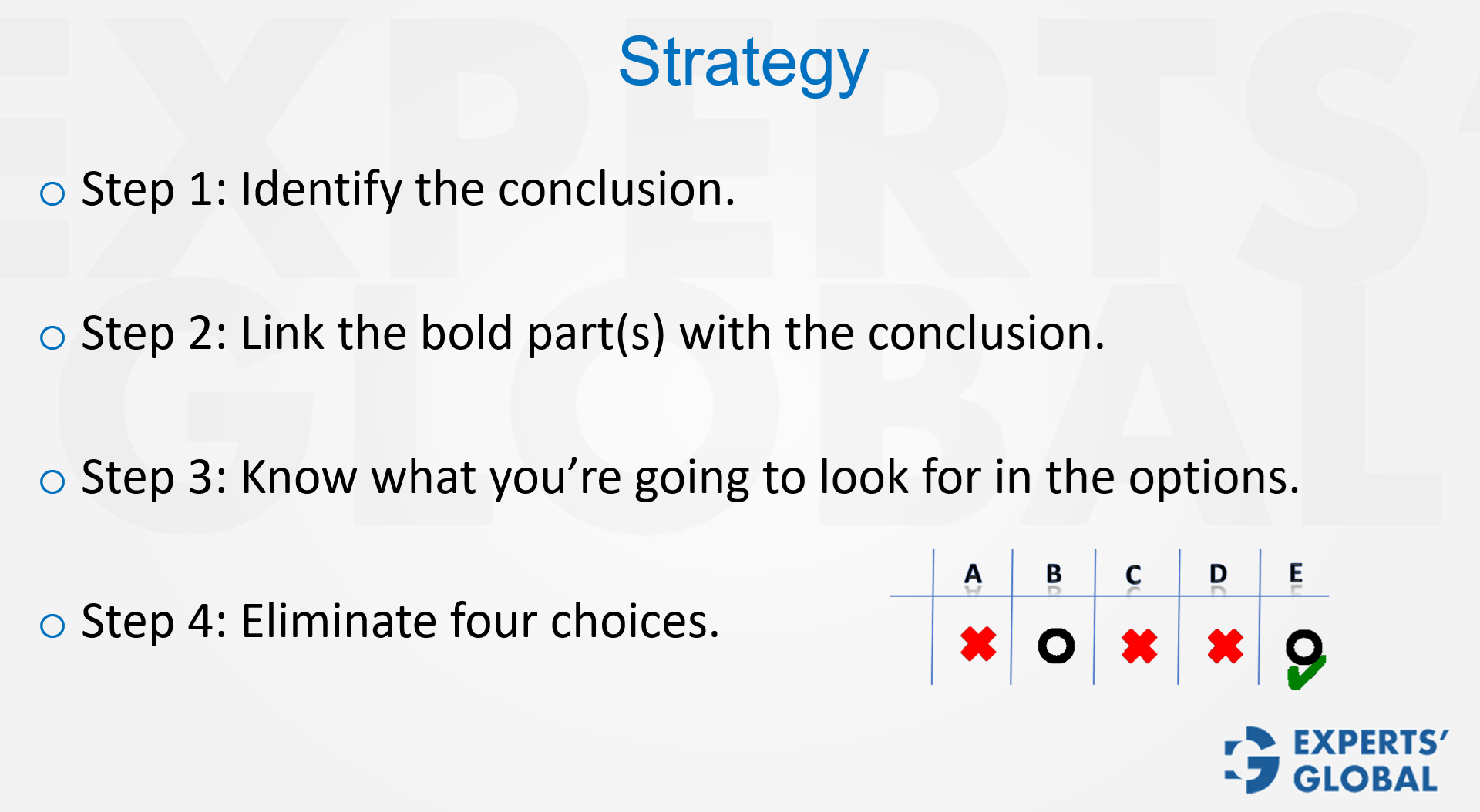Invest 30 seconds...
...for what may lead to a life altering association!
Help Line
- +91.8800.2828.00 (IND)
- 1030-1830 Hrs IST, Mon-Sat
- support@expertsglobal.com
...for what may lead to a life altering association!


One of the main challenges in CR Boldface questions is the demanding vocabulary, making regular work on the words frequently tested in critical reasoning an essential part of GMAT prep. As part of structured practice, we are enroute five vocabulary exercises, with this one presenting the second. Please watch the video carefully and then read the detailed textual explanation that follows.

In GMAT boldface questions, a passage is given with one or more portions in boldface. The task is to determine the role that those portions play in the passage. Because the vocabulary in boldface questions is often complex and correctly identifying the role of each bolded section is crucial, it is useful to work through a few vocabulary tests on this area.
Please read the following argument, carefully:
The GDP of Xitora has grown by 15% during the tenure of the current political party. This is the highest growth during any tenure over the previous 50 years. Since the GDP growth is a fine indication of the economic growth of a nation, the party must be applauded for its role. However, the recent opinion polls reflect a steep decline in the popularity of the party owing to its perceived softness on long-standing social and diplomatic issues. Therefore, the party is unlikely to win another term in the forthcoming elections.
Please go through the following list of terms. See which of these terms apply to the bolded portion. Once you have arrived at your answer, read further to see an explanation for each option.
GDP growth has been great –> party deserves credit –> party has been soft on other issues –> the party is not likely to win
The bolded section is not the main conclusion; this is quite clear, as the mind map shows us that the main conclusion is that the party is unlikely to win.
The bolded section is not an intermediate/smaller conclusion either.
The bolded section can be considered a fact, but this would be a somewhat weak choice.
This is a good potential answer, as the information presented cannot be called a hard fact. Rather the bolded section is more of an interpretation of information.
This is also a fine choice, largely for the same reasons that make “Opinion” a good option.
The bolded section is not a circumstance, since it is not a specific event.
The bolded section in this passage cannot be called evidence, as it is not a firm fact.
The bolded section is not a prediction, because it refers to a general truth, not a future outcome.
The bolded section is not an assumption, since it is explicitly stated rather than implied.
Yes, this bolded section can be described as a consideration as it has been considered for reaching the intermediate conclusion.
Thus, the three terms that can apply to the bolded section are “opinion”, “judgment”, and “consideration”. Considering the role that the bolded section plays in the passage, the best term is “consideration”. The bolded section acts as a consideration to lead to the intermediate conclusion that the party must be applauded for its role.
This statement is not the author’s main conclusion. The main point of the reasoning is that the party is not likely to win again. The boldface is instead used to support an intermediate conclusion that the party deserves recognition for the economic growth.
Out of all the possible nouns, consideration stands as the best classification. It reflects the function of the statement as a point of deliberation used to frame the intermediate conclusion that the party must be applauded for the GDP growth.

Boldface questions test the role, not the content, of highlighted statements. A single argument may present bold portions serving different roles such as fact, evidence, assumption, or consideration. The key is to link each boldface to the main conclusion and classify it precisely. For instance, “GDP growth is a fine indication…” works as a consideration supporting an intermediate conclusion, not the final claim. Practicing this structured classification in GMAT simulations develops clarity, consistency, and accuracy in Critical Reasoning.
Boldface practice is not only about labels. It is training for judgment. You slow down, define terms, trace roles, and let structure guide choice. That is how strong GMAT preparation feels. The same habit shapes MBA applications. You name your achievements, weigh context, test claims, and present a clear conclusion about fit and impact. Life rewards the same clarity. Facts earn space, opinions seek support, and predictions stay humble. When you classify ideas honestly, you decide wisely. When you decide wisely, you move with purpose. Keep practicing names and roles, and you will find your voice, path, and peace within.